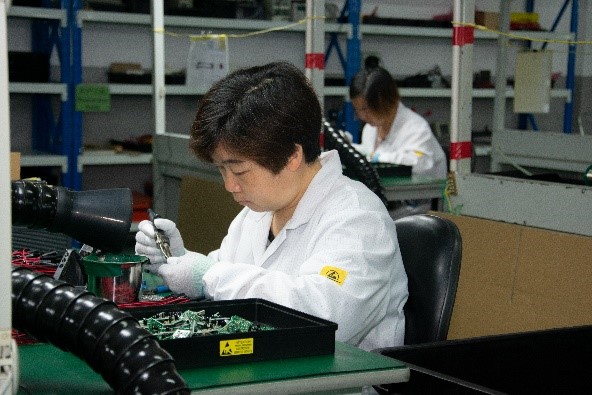The ingredients of CELEC’s IoT shift
People all over the world use CELEC solutions everyday without even realising it. Whether they be integrated in automatic taps, automatic doors or supermarket checkout conveyors, CELEC sensors and electronics make life easier. But who are they? Let’s find out!
CELEC designs and manufactures electronic solutions
CELEC develops and manufactures electronic automation solutions for manufacturers and integrators. With an extensive experience in electronics development and production CELEC’s quality and problem solving approach make the company a trusted supplier in its markets.
CELEC’s modern headquarters in Normandy, France are home to R&D and production facilities that supply the Americas, Europe and Africa. Our Chinese subsidiary, CELEC Ningbo, serves the Asian and South Pacific markets. The group benefits from a workforce of over 100 employees.
The company’s product offering has historically consisted of optoelectronic sensors and control boards in standard or bespoke formats. CELEC’s sales and development teams ensure that the best electronic solutions are provided to solve clients’ problems from a variety of business fields: sanitary ware, automatic doors, checkout/retail, military and other sectors. Internal production teams ensure that CELEC maintains control over the quality and cost of products.
CELEC and the Internet of Things
As a market leader, evolving in line with trends is key to CELEC maintaining its reputation. According to Statista, there will be over 30 billion connected devices installed worldwide by the end of 2020. Products in CELEC’s markets will be no exception to this trend as manufacturers demand connected solutions to deliver more services to their clients. It’s time for the IoT (Internet Of Things), CELEC is in turn adapting its organisation to respond to the market’s increasingly complex demands.
A major shift has been the introduction of CELEC’s innovation department. Jean-Marie LEBLOND, Innovation Manager, explains the evolution of electronics engineering: “Before the existence of software, we use to draw our electric circuits by hand, but once software became widely available engineering became far more productive. We can draw not only in 2D but also in 3D now. With the implementation of the SMD technology evolution it became possible to integrate more components on the equivalent surface of a PCB than with through components. This headway contributed to a benefit in energy consumption where CELEC offers today the best solution of the market, we have also been able to make sensors smaller with much more information than ever before and also with a better detection performance.”
CELEC’s Operations Director, Mathieu BRAULT, outlines that “At CELEC because of the wide variety of sensors and actuators that are requested by our customers, we like to integrate developers who have as much knowledge as possible. Our electronics engineers are multi-skilled. They have to master both analogic and digital components. In response to the IoT trend we have also integrated engineers specialised in wireless communication and application software into the team”
Counteract the electronic components shortage
Working closely with suppliers is vital for a successful IoT shift as a steep demand increase has put great pressure on the supply of electronic components. Magalie Auguste, CELEC’s procurement buyer, is working hard to manage today’s global components shortages. “One of the component providers services we appreciate the most is the order warnings that allow us to better anticipate orders and avoid delivery delays. CELEC can in turn deliver products to our clients on time.”
The importance of project management
Another important transformation for CELEC’s organisation is the emergence of the project manager role which has been created to help develop optimised solutions with respect to quality, time and cost, “we have trained all our workforce to move forward with an agile and effective development approach. This is imperative as CELEC encounters greater project complexity” Mathieu Brault.
CELEC’s IoT challenge
CELEC is facing one of today’s major business challenges, as is the case for all companies, this necessitates changes in the way the company operates with internal and external stakeholders. This dynamic SME is working to make sure that this evolution is a success. As Michel Fardo, CELEC’s CEO, states “I am confident that all these ingredients will support our IoT shift in 2019.”
Sources: Statista






